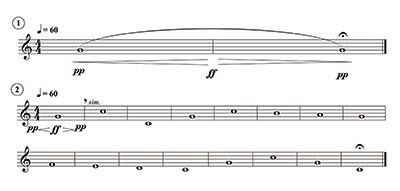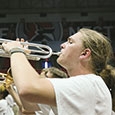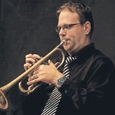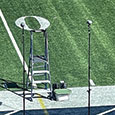Playing in any extreme dynamic on a brass instrument, especially trumpet can be a daunting task. Typically, most students spend their practice time playing mezzo forte, because it takes the least amount of effort and control. A structured practice session is important for this aspect, especially as it reminds students of the areas that need attention during their practice time.
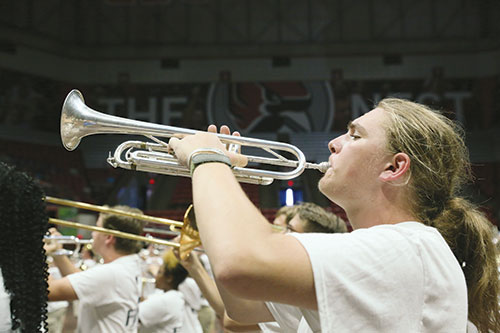
Soft Playing
The aperture in soft playing is so small that the student’s lips will almost completely touch. Because of this, the student needs to move fast air, which will keep their aperture open just enough to achieve the desired dynamic level while also keeping the lips in a state of gentle vibration. Soft playing is one of the most ignored aspects of brass playing, but it must be practiced often.
When playing softly, students should remember to keep mouthpiece pressure to a minimum. With so little air to begin with, too much mouthpiece pressure can stop the lips from vibrating. Try to maintain a constant airstream moving forward and outward from the instrument to avoid any shakiness or wobbling in the sound. Although the sound is quiet, it should always retain a warm core.
Loud Playing
When playing in louder dynamics, the student’s aperture will be open, and a large volume of air will pass through the lips into the instrument. The airstream will also be faster than for soft playing. Students should relax the center of the embouchure as much as possible; the more freely it vibrates, the greater their endurance and resonance will be. As with soft playing, students ought to keep mouthpiece pressure to a minimum to allow the lips to resonate freely; this will also increase endurance. Practicing extreme dynamics will improve sensitivity, confidence, and control while performing.
